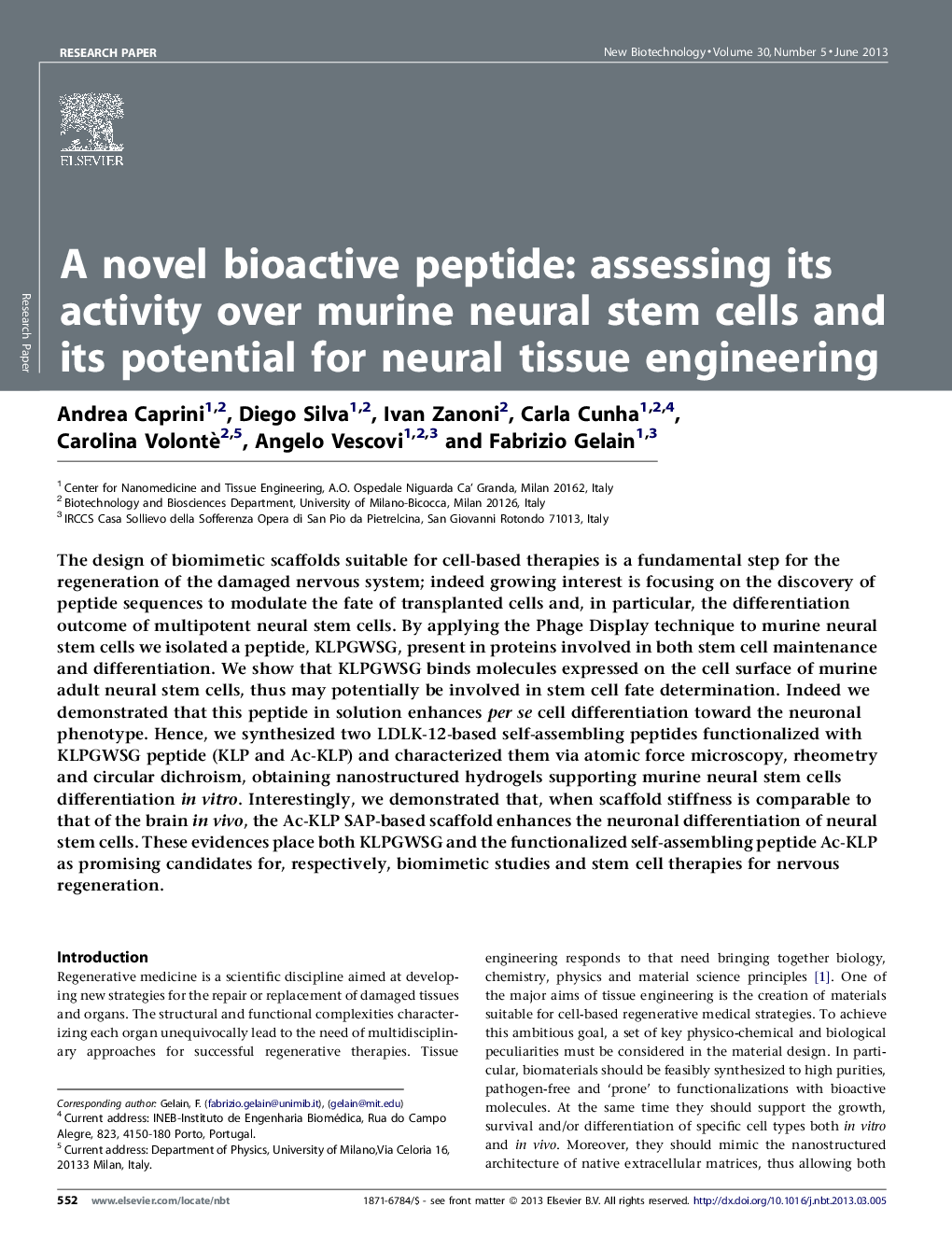| Article ID | Journal | Published Year | Pages | File Type |
|---|---|---|---|---|
| 33342 | New Biotechnology | 2013 | 11 Pages |
•The Phage Display technique allows us to find peptides binding neural stem cells.•The KLPGWSG peptide binds and enhances per se their neuronal differentiation.•We synthesized a self-assembling peptide functionalized with the KLPGWSG peptide.•We show that this scaffold enhances neural stem cells neuronal differentiation.•We found this effect at a stiffness level matching that of the brain in vivo.
The design of biomimetic scaffolds suitable for cell-based therapies is a fundamental step for the regeneration of the damaged nervous system; indeed growing interest is focusing on the discovery of peptide sequences to modulate the fate of transplanted cells and, in particular, the differentiation outcome of multipotent neural stem cells. By applying the Phage Display technique to murine neural stem cells we isolated a peptide, KLPGWSG, present in proteins involved in both stem cell maintenance and differentiation. We show that KLPGWSG binds molecules expressed on the cell surface of murine adult neural stem cells, thus may potentially be involved in stem cell fate determination. Indeed we demonstrated that this peptide in solution enhances per se cell differentiation toward the neuronal phenotype. Hence, we synthesized two LDLK-12-based self-assembling peptides functionalized with KLPGWSG peptide (KLP and Ac-KLP) and characterized them via atomic force microscopy, rheometry and circular dichroism, obtaining nanostructured hydrogels supporting murine neural stem cells differentiation in vitro. Interestingly, we demonstrated that, when scaffold stiffness is comparable to that of the brain in vivo, the Ac-KLP SAP-based scaffold enhances the neuronal differentiation of neural stem cells. These evidences place both KLPGWSG and the functionalized self-assembling peptide Ac-KLP as promising candidates for, respectively, biomimetic studies and stem cell therapies for nervous regeneration.
